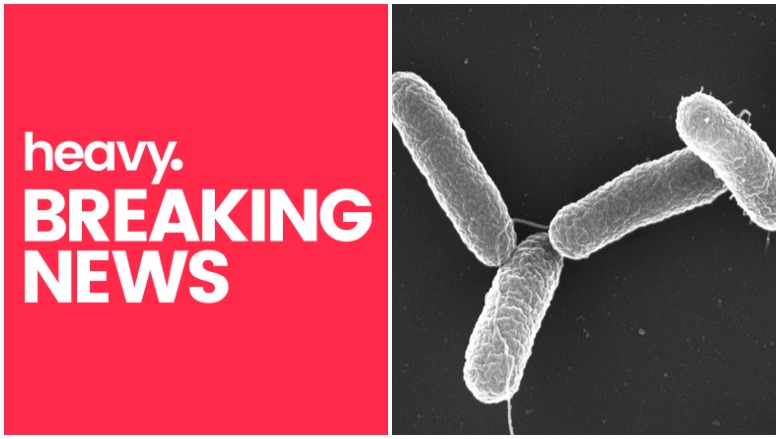
Heavy/Wikimedia Commons Salmonella can be present in many foods, including including raw meat, poultry, seafood and raw eggs.
As the coronavirus pandemic rages on, another national outbreak of salmonella has hit the U.S. affecting 15 states and 125 people. This outbreak comes nearly a month after an outbreak of 465 cases that resulted in one death and 86 hospitalizations.
Officials at the Centers for Disease Control and Prevention (CDC) have said that they have not pinpointed the source of the outbreak yet, but the states with the highest rates of infection are Oregon and Utah with a combined 47-72 reports of infections, according to their map of recorded cases.
According to the CDC, salmonella causes one million food-related illnesses and 380 deaths in the country every year. Digital health expert Bruce Lee of Forbes said that there have been at least 30 salmonella outbreak since the beginning of 2018.
The CDC Has Not Found the Source Yet of This Outbreak
In its July 21 announcement, the CDC said that it is still investigating the origins of the outbreak. “Public health investigators are using the PulseNet system to identify illnesses that may be part of this outbreak,” the CDC reported. “In this investigation, WGS (whole genome sequencing) showed that bacteria isolated from ill people were closely related genetically. This means that people in this outbreak are more likely to share a common source of infection.”
“On July 10, PulseNet identified an outbreak of 13 Salmonella Newport infections in three states,” The CDC said. “Over the next 10 days, the outbreak rapidly grew to 125 infections in 15 states.” Reports of this strain of salmonella began coming in on June 19, and the dates when there were the highest numbers of infections (13) took place June 30, July 3 and the holiday, July 4. The ages of those affected range from 2 to 92 and 24 people have been hospitalized so far.
The states involved include Washington, Oregon, California, Montana, Wyoming, Utah, Minnesota, Iowa, Missouri, Illinois, Wisconsin, Michigan, Ohio, Tennessee and North Carolina; the hardest-hit states are Oregon, Utah, Montana, Wyoming and Michigan.
Currently, the CDC is not issuing any directives:
CDC is not recommending that consumers avoid any particular food at this time. Restaurants and retailers are not advised to avoid serving or selling any particular food. We will provide more information as it becomes available.
This Latest Outbreak Comes A Month After One Which Hospitalized More Than 400 People
The CDC reported that the previous outbreak, which lasted from roughly January 14 to June 23, there were 465 cases reported, with most of them occurring between March 24 and May 19. From that investigation, the CDC determined that the likely cause was handling backyard poultry (chicks and ducklings) either in their own backyards and from various other sources, including agricultural stores, websites and hatcheries.
The CDC encourages people to exercise safety around poultry (avoid kissing or snuggling them, letting them inside the house, tracking elements from their area into the house on shoes, eating or drinking where poultry roam or cleaning equipment used to care for them indoors), ensure they and children are washing their hands frequently when in contact with poultry and be careful with egg collection (collecting them often, throwing away cracked eggs, refrigerating eggs and avoiding raw or undercooked eggs that have not been pasteurized).
Other ways to avoid salmonella include frequent handwashing, avoiding cross-contamination (allowing raw meat to touch fresh fruit and vegetables that are not being cooked along with the meat), quickly refrigerating leftovers and cooking food until it is thoroughly done.
Health experts at the Mayo Clinic say that salmonella poisoning is typically classified as “stomach flu” (also called gastroenteritis) and has similar accompanying symptoms, such as nausea, vomiting, abdominal cramps, diarrhea, fever, chills, headache and blood in the stool.
More serious complications include dehydration, bacteremia (when the infection enters the bloodstream) and reactive arthritis). Some of these symptoms are very similar to some of the gastrointestinal symptoms, or “stomach upset” some people with coronavirus have experienced, which Heavy detailed in a previous article.
The symptoms of a salmonella illness typically last four to seven days and most people do not need to see a doctor, the CDC has said. For those with symptoms, the CDC advises people:
- Consume large quantities of fluids
- Wash hands thoroughly and often
- Use a different bathroom than other members of a family or group, if possible
- Clean any fecal matter or vomit with a disinfectant
- Avoid preparing or serving food
Young children (less than 5 years old), the immunocompromised and seniors (ages 65 and older) are the most vulnerable to developing complications from a salmonella infection. For those who do need to see a doctor, the doctor will likely provide anti-diarrheals and fluids to counteract the dehydration as well as antibiotics to counter the infection, according to the Mayo Clinic.
READ NEXT: COVID-19: Studies Say An Upset Stomach Could Mean Worse Outcomes